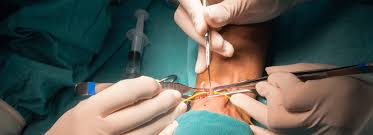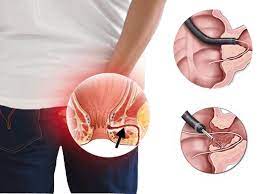What is Endorectal Flap Surgery, and Why is it Done in Anal Surgeries?

Most patients hesitate to open up about their problems, even when it comes to anal diseases. Nevertheless, with early intervention, serious complications can be avoided and the quality of life can be enhanced.
Endorectal flap surgery is one of the complicated surgeries performed on anal issues. This surgery has assisted a large number of patients who could not be relieved by other treatment methods.
At Pelvinic, patients are given modern and effective methods of treating the issue under the guidance of Dr. Sandip, in a secure and caring atmosphere.
What is Endorectal Flap Surgery?
Endorectal flap surgery is a unique type of surgery that is used to cure challenging diseases around the rectum and the anus, particularly anal fistulas. An anal fistula is a small hole that appears between the inner part of the rectum and the skin around the anus. It commonly occurs subsequent to an abscess (a pool of pus) and is rarely self-limiting.
Simply put, endorectal flap surgery involves dressing up and sealing the internal aperture of the fistula with a piece of healthy rectal tissue. This ensures that the wound heals well and the fistula does not recur.
Why is Endorectal Flap Surgery Done?
- Anal fistulas do not heal automatically: The anal fistulas are stubborn and do not self-heal. Some may help alleviate the pain temporarily with medicines and home remedies, but these should not seal the fistula. That is the reason why surgery is required in the vast majority of cases. Endorectal flap surgery is said to be among the safest and most effective procedures that help in eliminating the root of the problem and long-term healing.
- Safeguarding the Anal Sphincter Muscles: The muscles of the anal sphincter are highly relevant in regulating bowel movements. In most of the fistula cases, the tract enters these muscles. Surgery can give rise to severe complications, such as incontinence, when an individual loses control over stool. The endorectal flap surgery is aimed at protecting these muscles. Rather than cutting through them, the internal opening is closed using a healthy tissue flap, which makes the procedure safe.
- Repeat Fistulas or Complex Fistulas: Not all fistulas are simple. Others might have more than one branch or recur after an operation. They are referred to as complex or recurrent fistulas. In this situation, the conventional processes might fail. The most suitable surgery is the endorectal flap surgery since it enables the surgeon to handle complicated tracts without tearing the anal muscles. This modern solution enhances the possibility of full recovery from challenging conditions.
- More Successful Recovery and Less Recurrence: Endorectal flap surgery is one of the procedures that has the benefit of healing better. The healthy tissue has a flap that covers the inner hole, and thus the region heals on its own. This not only reduces the time taken in the healing process but also reduces the likelihood of the fistula returning. Patients will be able to go back to normal life with confidence and long-term relief after surgery with lower recurrence rates.
How is the Surgery Done?
Understanding the surgical process helps reduce patient anxiety. Here is a step-by-step explanation in simple terms:
- Anaesthesia: The patient is given spinal or general anaesthesia so that they feel no pain.
- Cleaning and Examination: The anal area is cleaned, and the surgeon carefully checks the fistula tract.
- Flap Creation: A flap of healthy tissue is created from the rectal lining. This flap remains attached to its blood supply so that it heals well.
- Closing the Fistula Opening: The internal opening of the fistula (inside the rectum) is closed with stitches, and the flap is moved down to cover this opening.
- Securing the Flap: The flap is stitched in place, ensuring it lies smoothly without tension.
- Drainage of the Tract: The external part of the fistula is allowed to heal naturally.
Recovery After Endorectal Flap Surgery
Recovery is an important phase. At Pelvinic, Dr. Sandip and his team provide clear aftercare instructions to ensure smooth healing.
- Hospital Stay: Most patients can go home within a day or two.
- Pain Management: Mild pain and discomfort are expected, but pain medicines help.
- Diet: Patients are advised to take a fibre-rich diet and plenty of fluids to avoid constipation.
- Hygiene: Keeping the area clean is important. Sitz baths (sitting in warm water) help reduce pain and promote healing.
- Follow-up Visits: Regular check-ups ensure that the flap is healing properly.
Most patients are able to return to their normal activities within 2–3 weeks.
Risks and Complications
Like any surgery, there can be some risks, although they are rare:
- The flap may not heal properly.
- Fistula may recur.
- Minor bleeding or infection.
- Temporary difficulty in bowel movement.
However, under experienced surgeons like Dr. Sandip at Pelvinic, the chances of complications are very low.
Why Choose Dr. Sandip at Pelvinic for Endorectal Flap Surgery?
Choosing the right surgeon is just as important as choosing the right treatment. Dr. Sandip at Pelvinic has years of experience in advanced colorectal and anorectal surgeries. Patients choose Pelvinic because:
- Specialized Expertise: Focus on anal and rectal diseases with advanced surgical methods.
- Patient-Centered Care: Every patient is treated with empathy and privacy.
- Modern Facilities: Equipped with advanced technology for safe procedures.
- Proven Results: High success rate in treating complex anal fistulas.
- Personalized Guidance: From diagnosis to recovery, patients receive step-by-step support.
Life After Surgery
Most of the patients lead a normal and healthy life without pain or discharge after the successful endorectal flap surgery. The risk of anal problems in the future can further be reduced through simple lifestyle modifications such as the intake of fibre-rich foods, hydration, and hygiene.
Final Thoughts
Endorectal flap surgery is a safe and consistent method of correcting patients with anal fistulas, especially when other methods fail. It protects the anal muscles, decreases recurrence, and enables patients to resume their normal lives very soon.
At Pelvinic, Dr. Sandip makes sure that each patient receives the best treatment using the latest methods and a personal approach. In case of an anal fistula or other problems in the anorectum, a specialist can help you, such as Dr. Sandip at Pelvinic, and make all the difference.



